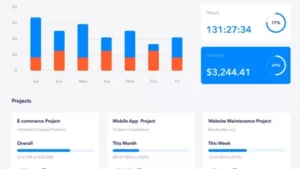The devastating impact of the bushfires across Australia will be felt for a long time to come, as Governments and other organisations now address the tasks of assisting people and communities to recover and review the causes and consequences of the fires. For HR practitioners, among the challenges were to maintain contact with employees and to assist them to recover. One of the lessons from the tragedy appears to have been that ‘old-fashioned’ communication methods may still have a role when widespread disaster occurs or is imminent. This article looks at the implications for communication when a major disaster or emergency arises.
Can you still contact employees?
These days almost everyone has a mobile phone and personal email, and probably most have social media accounts. Sometimes the first two of these are the only contact details recorded by the employer, particularly so in the case of casual employees. But during the bushfires, there were times when the provider services either went down or were hopelessly overloaded. Some social media platforms also became unavailable. If your business, or some of your employees, are in areas that could become inaccessible when bushfires occur – and this time there were many such areas – you should consider having multiple means of contact available. Depending on the circumstances, these could comprise:
- The employee’s home address – if phone/email contact is lost, someone may have to physically search for an employee
- More than one contact number (eg landline and mobile)More than one emergency contact person – eg an immediate family member plus a friend or relative living elsewhereProvision of satellite phones may sometimes be appropriate
- An email service continuity system (for when servers fail)With the employee’s prior permission, details of any social media platforms they use
- Note that employee records must be maintained in compliance with relevant legislation, with appropriate permissions to keep information obtained.
Evaluate methods of communication
For ongoing bushfire-related communications, and as preparation for dealing with future large-scale emergencies, reviewing your methods of communicating with employees is recommended. The following can be regarded as a best-practice approach, although adjustments to accommodate individual circumstances may be required:
- Appoint an overall person in charge – not necessarily the CEO, preferably someone with expertise in the area – and ensure everyone knows who he/she is and what authority to act he/she has.
- A support team is also required. Ensure everyone knows who they are and what they need to do.
- Set out both what you know about the situation and what you don’t know. Don’t attempt to fill in the gaps with speculation.
- To ensure the information gets through to everyone, use multiple media types.
- Explain clearly both what the organisation is doing and what you want employees to do – this applies to protecting safety, restoration/recovery work, employment arrangements, donations, etc.
- Look after your employees first – customers, shareholders, suppliers, etc can be contacted later.
- Be aware that employees may be grieving, either for their own situations or for those of work colleagues, family members and/or friends. This applies also to employees who are not in areas directly affected by the disaster/emergency.
- Allow ample opportunity for employees to ask questions about their own issues of concern.
- Avoid overloading employees – limit it to “what we need to know NOW” each time.
Longer-term follow-up contact required
At present, the bushfires and their aftermath are still dominating the headlines. Governments, charities and other organisations are coordinating and delivering various forms of assistance, donations are still being made, and recovery plans are starting to come into operation. But this is a catastrophe that is not going to be sorted in a few weeks or even months – its impact will be ongoing for much longer than that. Maybe another major event will take over the headlines and people who weren’t directly affected by the bushfires will start to forget about them. For HR practitioners, it will be essential to maintain ongoing contact with, and support for employees who are affected. A suggestion for employees you are not in regular contact with is to make a diary note to contact each one after three, six, 12 months, etc to check how they are traveling. You should also diary for reviews of support actions your organisation has taken. Were they effective? Are they still required? What could have been done better with them? Another recommendation is to keep abreast of what forms of assistance are available to both your employees and the business itself and be able to assist with explaining them and gaining access to them.


